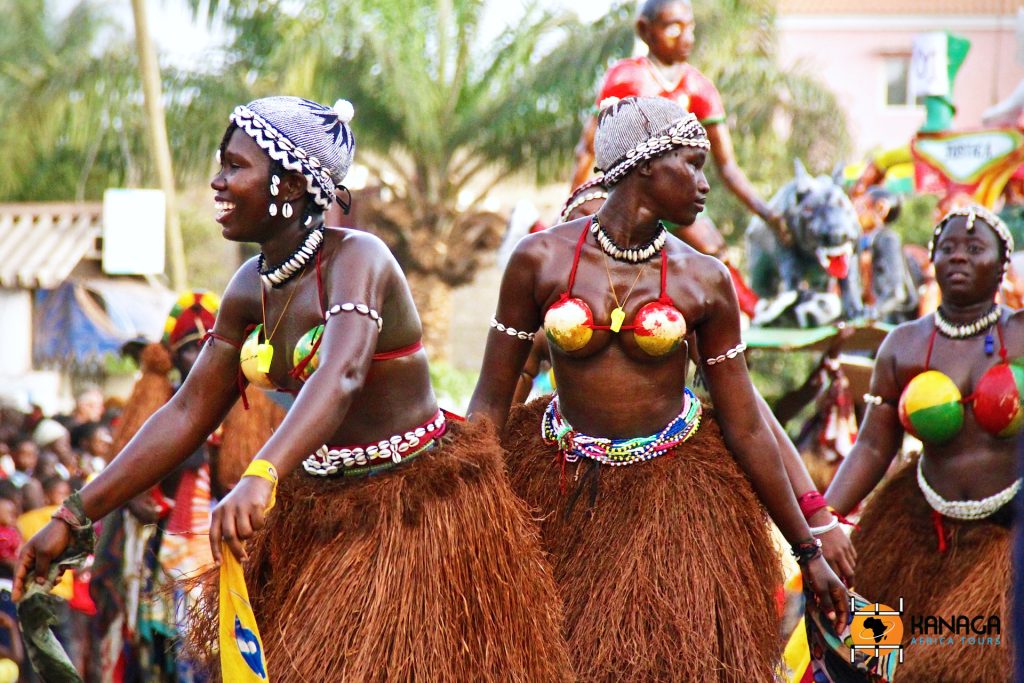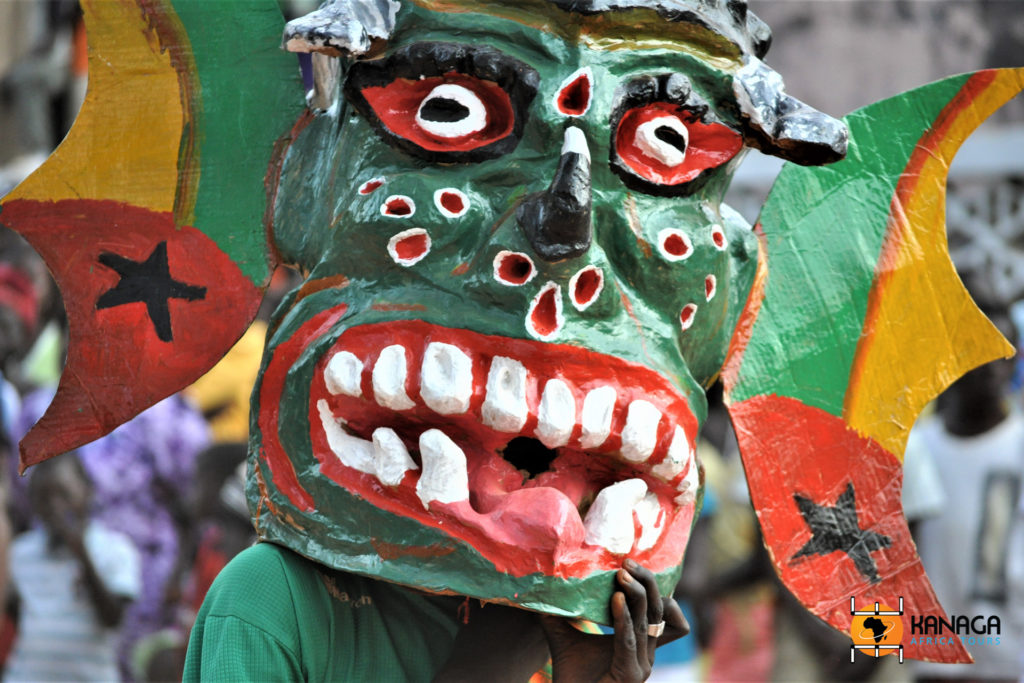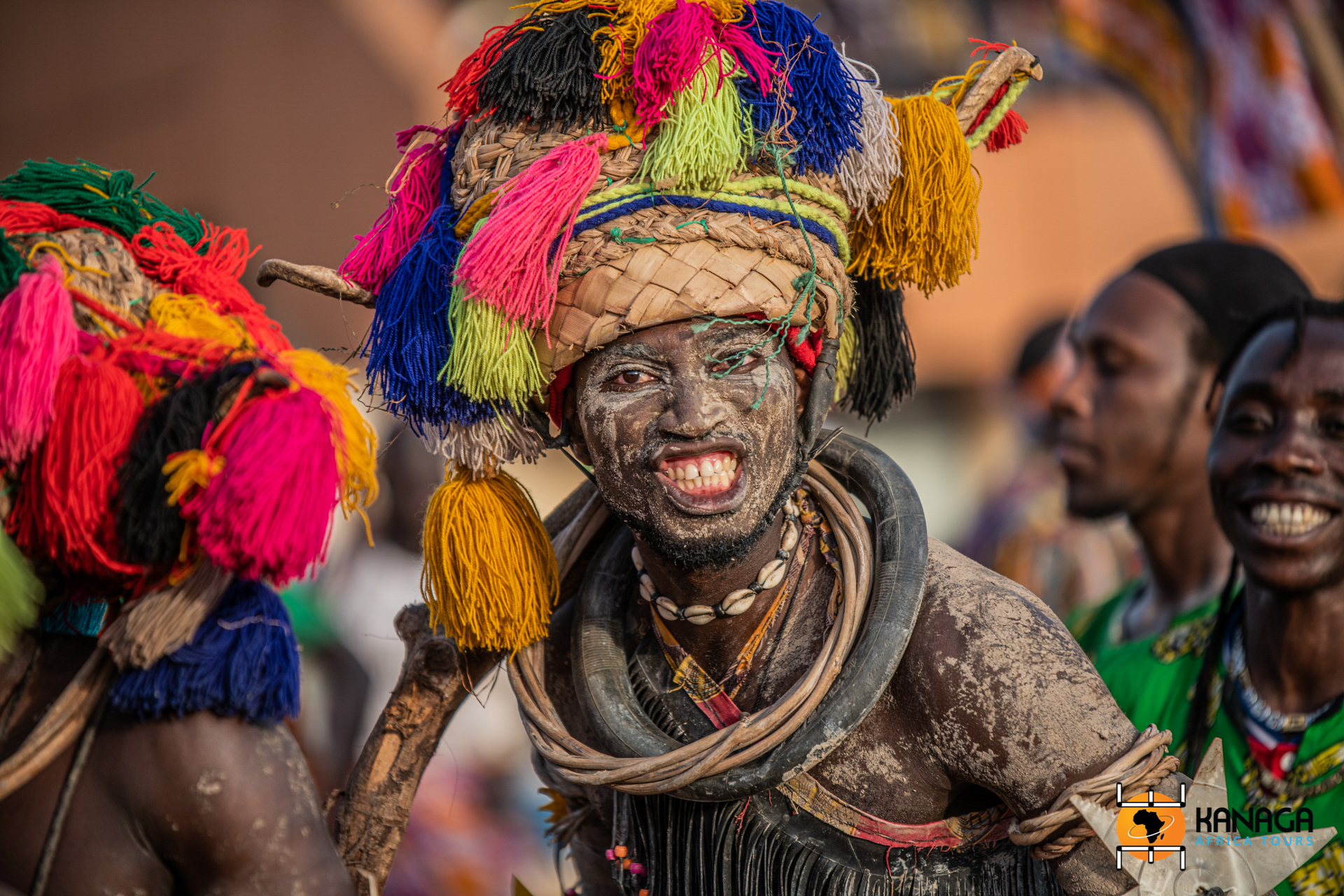© M. Bonutto
Bissau, a cheerful and eventful city already in its daily life, reaches the pinnacle of carefree during its famous Carnival in February. An event of a few days, more intimate than the famous Rio carnival, but no less colorful. The crowning glory of this popular festival, a perfect mix of Carioca influence and African traditions, is the parade of groups of dancers and bearers of tribal masks, coming from every region of the country, who parade and perform in their performances in a real competition. Swirls of oiled and painted bodies, typical costumes and ornaments, such as anklets of mango seeds or intertwined palm trees, real athletes who dance incessantly and acrobatically to the rhythm of tam-tams and of traditional music, interspersed with the release of modern papier-mâché masks, satirical towards politics and representatives of national power. It’s a true kaleidoscope of colors in a single event, not to be missed. At sunset, the official parade ends and thousands of people flock to the streets of the city and into the vervenas (local bars), to continue celebrating and drinking rivers of cana (local rum) until dawn.
The carnival of Bubaque is more intimate, in the main island and capital of the Bijagos Archipelago. Here, a few days before the big Bissau parade, the traditional groups of young dancers and bijagos dancers meet and parade in the village’s main square, in order to be chosen as representative group, which will be sent to the national demonstration on the mainland. This is an event that allows you to immerse yourself in the culture and traditions of one of the most authentic peoples of Guinea Bissau.







